Below is a transcript the the video:
We’ve been going through we started a couple weeks ago looking at why do we have funerals and so we have those three stations and today we really want to talk about the liturgy and what is the liturgy, and we need to go fundamentally that the liturgy, the mass is the source and the summit of our faith.
So, when we’re thinking of the liturgy, it is really that high point where we’re coming from the home with the vigil. We’re moving into the church where we’re putting up placing ourselves directly in god’s presence through that source and summit of the liturgy of Mass and then finally we’re moving to the cemetery for the committal where we will be turning our loved one over to the love of god and the mercy of god and committing on to their final resting place so the funeral liturgy again the most common preferred way is the funeral mass this is a traditional mass with a couple different components in it that we’ll talk about but then you can also do the funeral liturgy outside of mass for different pastoral reasons.
It may be we don’t can’t get a priest. It may be that for the good of the family that it’s better to do the liturgy outside of the mass. We have two formats. The funeral liturgy outside of mass
and in the preferred the funeral mass itself and that is what we will spend our time talking about what is that funeral mass look like.
The other piece before we go into that those components is the church really highly recommends and asks that the body be present for that Funeral Mass. Now, the cremated remains can be, but the preferred way is always to have that body present representing for the body of Christ that was there and laid to rest at the same point in time. Having the body there provides both spiritual and psychological benefits for those attending the liturgy and so there’s spiritual and psychological reasons for it but we really do like to have the body present for that funeral liturgy for that funeral mass but the same point in time you can have the cremated remains and there’s a lot of different reasons why people do that as well.
When we’re thinking about the mass, the liturgy, it follows basically the same format as a traditional mass but at the beginning and the end, there’s some slight differences. At the beginning, you’re going to most likely have the reception of the body. If you have a full body there, a pall will be placed over the casket reminding us of the the white garment that was provided to us at our baptism. We’ll have the sprinkling right. We’re reminded of the baptism of the of the loved one going back to the sprinkling and of the baptismal washing that occurred at the baptism and so we’ll have that reception right.
The individual will be brought into the chapel at that point in time and then the mass will proceed as typical with the liturgy of the word, the liturgy of the Eucharist and then at the end, we have the commendation prayers and the commendation prayers have some different components to it where we’re asking God to take this loved one into his care and take him into his arms at that point in time and so when you think of the funeral mass it really is a similar components of a mass with just a an addition at the beginning of the end.
Now one of the things I think needs to be clear and we’ll end with is who is that mass for? Often times, I’ll be talking to families that come in and say you know what we don’t really practice our faith anymore even though mom went to church every single day, we don’t really think we need to have the mass. Well, the bottom line is that Funeral Mass, well, it has some benefits for ourselves and filling that void that we may have. The Funeral Mass is for that person who passed away. It’s their final time in the church. It’s their final time within that sacrament of the Eucharist and so, when we’re thinking about the Funeral Mass, this is really a time for that loved one who passed away where we’re praying for their soul, their journey that they’re having to the heavenly father and so important that we remember that that mass is really for that person who passed away.
And so there we have it the second station the funeral liturgy where you have the funeral mass but you can also have the liturgy outside of mass with it again all that goes back to why do we have funerals we have it to worship god we have it to thank him for his love and mercy we have it to ask for his graces to fill us and fill that void that we have at the loss of loved one and finally we have it to pray for that person passed away.
We thank you for joining us this week and make it a great week.
Catholic Funeral & Cemetery Services of Colorado
A Ministry of the Archdiocese of Denver

